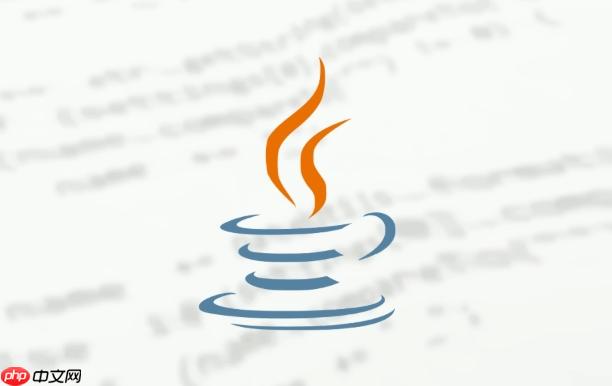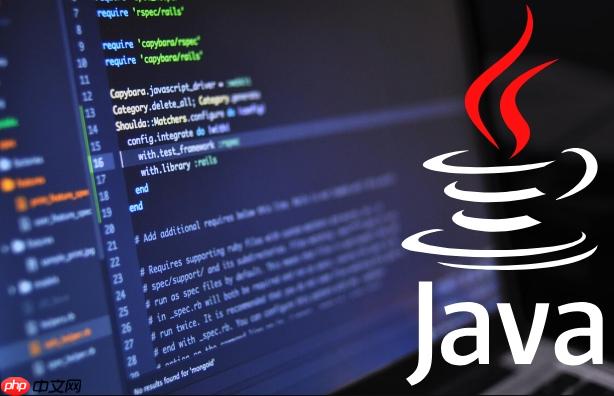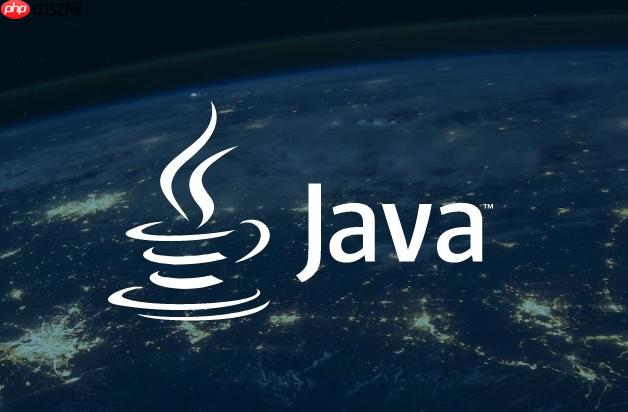要使用java实现简单cdn缓存,关键在于拦截请求并检查缓存是否存在,存在则返回缓存内容,否则从源服务器获取并存入缓存。1. 请求拦截:通过servlet filter或拦截器拦截请求;2. 缓存检查:根据url检查缓存中是否存在响应;3. 缓存命中:若存在则直接返回缓存内容;4. 缓存未命中:若不存在则继续请求链获取响应;5. 缓存存储:将获取的响应内容存入缓存;6. 响应返回:将响应内容返回客户端。同时,通过设置cache-control、expires等http响应头控制缓存行为,选择合适的策略如max-age、etag等以实现缓存优化,并结合基于时间、事件或版本控制等方式处理缓存失效与更新问题。

简而言之,用Java实现简单CDN缓存,关键在于拦截请求,检查缓存是否存在,存在则直接返回,不存在则从源服务器获取并存入缓存。Java设置请求缓存策略,通常涉及设置HTTP响应头,如Cache-Control和Expires。

实现一个简单的CDN缓存机制,大致可以分为以下几个步骤:
以下是一个简单的Java代码示例,展示了如何使用HashMap实现一个基本的内存缓存:
立即学习“Java免费学习笔记(深入)”;

import java.io.IOException;
import java.util.HashMap;
import java.util.Map;
import javax.servlet.Filter;
import javax.servlet.FilterChain;
import javax.servlet.FilterConfig;
import javax.servlet.ServletException;
import javax.servlet.ServletRequest;
import javax.servlet.ServletResponse;
import javax.servlet.http.HttpServletRequest;
import javax.servlet.http.HttpServletResponse;
public class SimpleCacheFilter implements Filter {
private static final Map<String, CachedResponse> cache = new HashMap<>();
@Override
public void init(FilterConfig filterConfig) throws ServletException {
// 初始化操作,可以读取配置文件等
}
@Override
public void doFilter(ServletRequest request, ServletResponse response, FilterChain chain)
throws IOException, ServletException {
HttpServletRequest httpRequest = (HttpServletRequest) request;
HttpServletResponse httpResponse = (HttpServletResponse) response;
String url = httpRequest.getRequestURL().toString();
// 检查缓存
CachedResponse cachedResponse = cache.get(url);
if (cachedResponse != null && !isExpired(cachedResponse)) {
// 缓存命中
System.out.println("Cache hit for URL: " + url);
cachedResponse.applyTo(httpResponse);
} else {
// 缓存未命中或已过期
System.out.println("Cache miss for URL: " + url);
// 创建一个包装的响应对象
ResponseWrapper responseWrapper = new ResponseWrapper(httpResponse);
// 执行请求链
chain.doFilter(request, responseWrapper);
// 将响应内容存入缓存
byte[] content = responseWrapper.getContent();
String contentType = responseWrapper.getContentType();
if (content != null && contentType != null) {
cache.put(url, new CachedResponse(content, contentType, System.currentTimeMillis()));
}
// 将响应内容返回给客户端
responseWrapper.copyTo(httpResponse);
}
}
private boolean isExpired(CachedResponse cachedResponse) {
// 缓存过期时间,例如 10 秒
long expirationTime = 10 * 1000;
return (System.currentTimeMillis() - cachedResponse.getTimestamp()) > expirationTime;
}
@Override
public void destroy() {
// 销毁操作,释放资源
}
// 内部类,用于包装响应内容
private static class ResponseWrapper {
private HttpServletResponse response;
private byte[] content;
private String contentType;
public ResponseWrapper(HttpServletResponse response) {
this.response = response;
}
public byte[] getContent() {
return content;
}
public String getContentType() {
return contentType;
}
public void setContent(byte[] content, String contentType) {
this.content = content;
this.contentType = contentType;
}
public void copyTo(HttpServletResponse response) throws IOException {
if (content != null) {
response.setContentType(contentType);
response.setContentLength(content.length);
response.getOutputStream().write(content);
}
}
}
// 内部类,用于存储缓存的响应
private static class CachedResponse {
private byte[] content;
private String contentType;
private long timestamp;
public CachedResponse(byte[] content, String contentType, long timestamp) {
this.content = content;
this.contentType = contentType;
this.timestamp = timestamp;
}
public byte[] getContent() {
return content;
}
public String getContentType() {
return contentType;
}
public long getTimestamp() {
return timestamp;
}
public void applyTo(HttpServletResponse response) throws IOException {
response.setContentType(contentType);
response.setContentLength(content.length);
response.getOutputStream().write(content);
}
}
}这个例子非常简化,没有考虑并发、缓存淘汰策略、错误处理等问题,但它展示了基本的工作流程。需要注意的是,实际的CDN缓存系统会更加复杂,通常会使用专门的缓存服务器(如Redis、Memcached)来存储缓存数据,并采用更复杂的缓存策略。
HTTP响应头是控制缓存行为的关键。以下是一些常用的HTTP响应头及其作用:

Cache-Control: 这是最重要的缓存控制头。它允许你指定多种缓存策略,例如:
Cache-Control: public: 允许任何缓存(包括CDN和浏览器)缓存响应。Cache-Control: private: 只允许浏览器缓存响应。Cache-Control: no-cache: 强制缓存服务器每次都向源服务器验证响应。Cache-Control: no-store: 禁止任何缓存存储响应。Cache-Control: max-age=seconds: 指定响应被缓存的最大时间(秒)。例如,Cache-Control: max-age=3600 表示响应可以被缓存1小时。Cache-Control: s-maxage=seconds: 类似于max-age,但只适用于共享缓存(如CDN)。Cache-Control: must-revalidate: 强制缓存服务器在过期后必须向源服务器验证响应。Expires: 指定响应过期的日期和时间。这是一个较旧的头,通常与Cache-Control一起使用。如果同时存在,Cache-Control的优先级更高。例如,Expires: Thu, 01 Dec 2023 16:00:00 GMT。
Pragma: 这是一个HTTP/1.0的头,通常设置为Pragma: no-cache,等同于Cache-Control: no-cache。
ETag: 服务器为资源生成的唯一标识符。客户端可以通过If-None-Match请求头将ETag发送给服务器,服务器可以验证资源是否已更改。
Last-Modified: 资源的最后修改时间。客户端可以通过If-Modified-Since请求头将最后修改时间发送给服务器,服务器可以验证资源是否已更改。
在Java Web应用中,你可以通过HttpServletResponse对象来设置这些头:
HttpServletResponse response = (HttpServletResponse) servletResponse;
response.setHeader("Cache-Control", "public, max-age=3600");
response.setDateHeader("Expires", System.currentTimeMillis() + (3600 * 1000)); // 设置1小时后过期选择合适的缓存策略取决于你的应用场景和需求。以下是一些建议:
Cache-Control: public, max-age=...设置较长的缓存时间。Cache-Control: no-cache或Cache-Control: must-revalidate,确保每次都向源服务器验证。Cache-Control: public,应该使用Cache-Control: private, no-store或Cache-Control: no-cache,甚至不缓存。另外,要考虑到CDN的缓存行为。不同的CDN提供商可能有不同的缓存策略和配置选项。你需要根据你的CDN提供商的文档来配置缓存策略。
缓存失效和更新是一个复杂的问题。以下是一些常见的处理方法:
style.css?v=1.0)。当资源更新时,更新版本号,强制客户端重新下载资源。选择哪种方法取决于你的应用场景和需求。基于事件的失效通常是最有效的,但实现起来也最复杂。版本控制是一个简单有效的替代方案,但需要手动更新URL。
总的来说,实现一个有效的CDN缓存机制需要综合考虑多个因素,包括缓存策略、HTTP响应头、缓存失效和更新等。希望以上信息能对你有所帮助。
以上就是如何用Java实现简单CDN缓存机制 Java设置请求缓存策略示例的详细内容,更多请关注php中文网其它相关文章!

每个人都需要一台速度更快、更稳定的 PC。随着时间的推移,垃圾文件、旧注册表数据和不必要的后台进程会占用资源并降低性能。幸运的是,许多工具可以让 Windows 保持平稳运行。

Copyright 2014-2025 https://www.php.cn/ All Rights Reserved | php.cn | 湘ICP备2023035733号